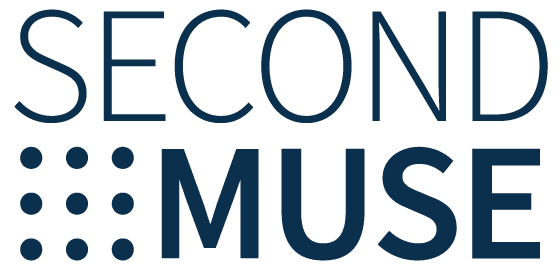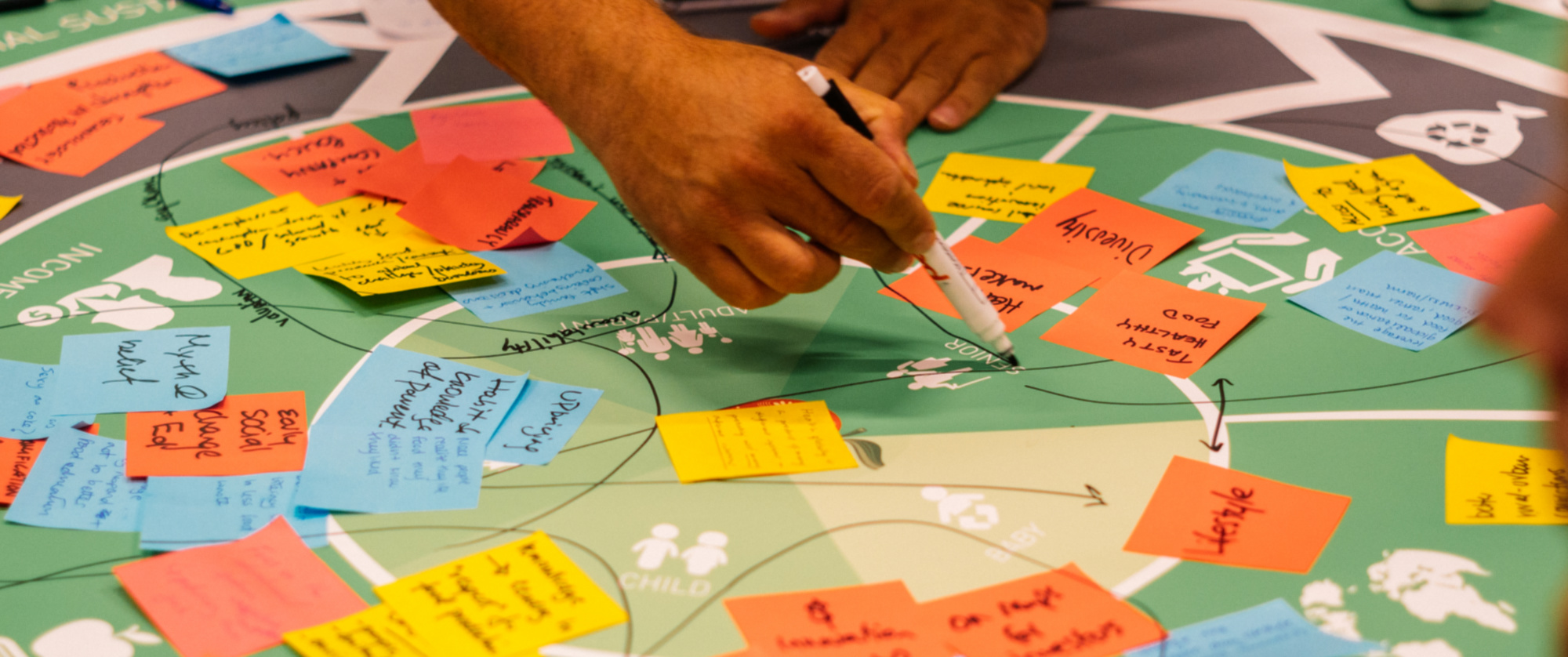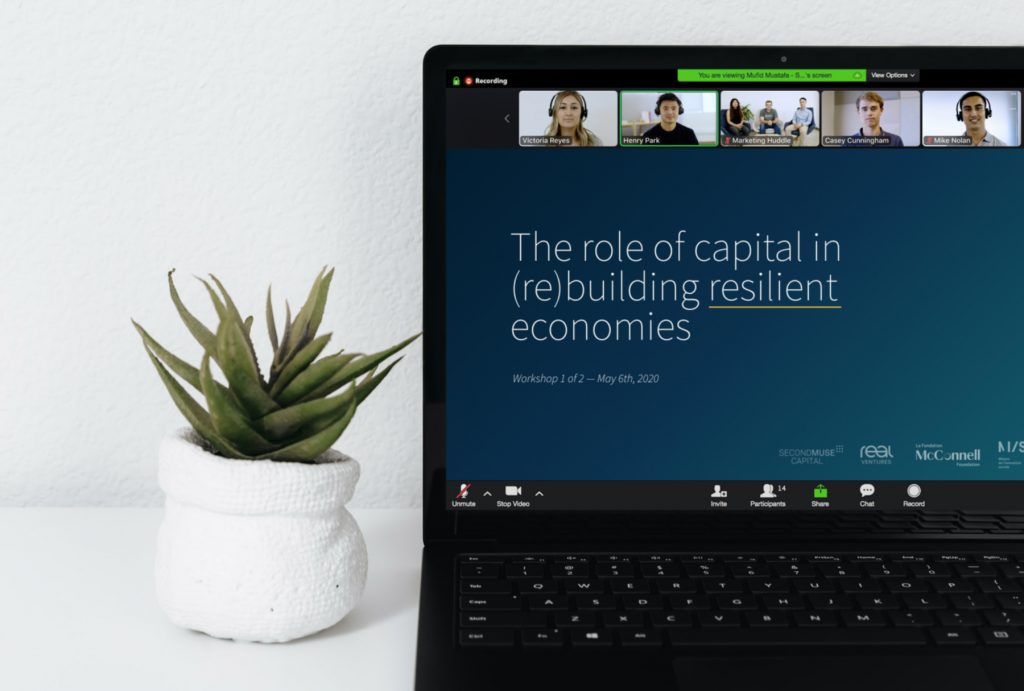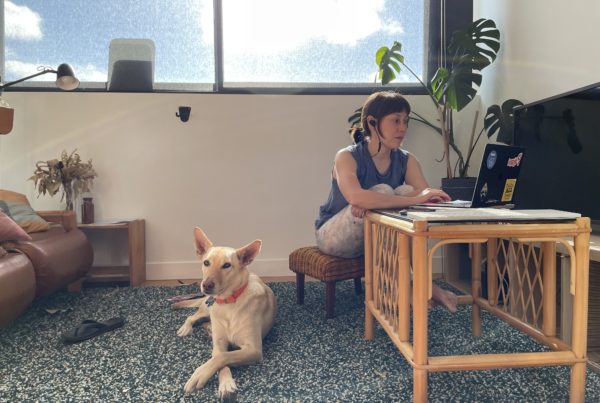The Lab has taken on barriers to entrepreneurship and inclusion in Québec's climate economy, education financing in the U.S., and now has its sights set on a range of new endeavors.
As anyone in the world of entrepreneurship knows, a phenomenal idea alone is no guarantee of success. Even products and services shown to fill legitimate needs can get bogged down in the “valley of death” and keep promising innovations from ever making it out into the world. The obstacles vary from sector to sector, but generally come down to lack of support, connections and capital — especially for entrepreneurs from historically marginalized communities.
“The financial mechanisms and tools at the heart of our economies are typically developed through highly exclusive and extractive processes, behind boardroom doors and at the expense of communities,” says Natalia Arjomand, Director at SecondMuse Capital. “Those with a seat at the table often represent a highly homogeneous group from similar cultural and socioeconomic backgrounds, which perpetuates an unjust system.”
Enter SecondMuse Capital’s Future Economy Lab (FEL). Part research lab, part design lab that generates financial mechanisms and models, the Lab was launched in 2020 to innovate the way we finance the development of economies — and to pioneer new ways of growing inclusive and resilient economies.
Since launching, the Lab has taken on barriers to entrepreneurship and inclusion in Québec’s climate economy, education financing in the United States, and now has its sights set on accelerating investment in girls of color throughout the U.S. and building an inclusive climate economy in New York state.
ORIGINS
The initiative began with a vision for economies that are not designed to benefit a few, but rather to benefit all. One of the key ways the first lab sought to achieve that vision was by bringing investors and capital providers into the ecosystem building process much earlier than usual.
“Programs intended to catalyze and support innovation and entrepreneurs — i.e. the R&D stage of economies — tend to be financed at large by philanthropy and public funds. Investment capital comes in much later in the entrepreneurial journey. The tendency for investors to enter the process much later disconnects them and crucial capital from the entire ecosystem building process,”
“The idea of Future Economy Lab was to create financial mechanisms that encourage philanthropic, public and private sector involvement in the start of a new economy.” says Erica Barbosa, SecondMuse Capital’s Global Head of Sustainable Finance & Innovation.
The inaugural FEL, launched by SecondMuse Capital and its partners at Maison de l’innovation sociale, McConnell Foundation and Real Ventures, honed in on challenges to climate financing in Québec. It resulted in CLIO, a soon-to-launch early-stage climate fund linked to an ecosystem development program — one that mentors nascent businesses and other key stakeholders to prioritize diversity, inclusion and other key social and environmental issues. The fund was also designed to direct a percentage of profits back to ecosystem development work.
“For me, the biggest gauge of success was the positive feedback we received after our workshops and the enthusiasm we saw from investors,” Arjomand says. “It’s not often that investors are brought in at the early stages of research and design and are connected to the development of economies in such a personal way.”
HONING IN ON BARRIERS TO EDUCATION FINANCING
More recently, the Lab has explored barriers to increased investment and solutions in the public education sector in the U.S.. In collaboration with Zebras Unite and the Bill & Melinda Gates Foundation, this iteration began with a months-long research phase to understand the readiness of the education market for innovative, impact aligned forms of financing.
A recently published Future Economy Lab report details barriers entrepreneurs in the education space face, particularly if they are women, first-generation Americans, BIPOC or if they come from poverty. While this trend is common across all sectors, the Lab also honed in on the unique implications of this trend in the diverse world of public education.
The innovations that scale and make it into public education systems, the report says, are typically designed by founders whose experiences do not reflect the diverse population of students in the system. Innovators whose lived experience is better aligned with the needs and experiences of public school students are the ones most likely to struggle for financing and entrepreneurial support. “Most VC is concentrated in just four coastal states; and it favors business models that are seeking rapid growth and quick exits,” the report explains. Yet: “The founders who we spoke within this space — mothers, teachers, administrators — were motivated less by the chance for lucrative exits and more by the prospect of improving the lives of students and their communities.”
To address this disconnect, lab participants consulted with a range of stakeholders — from founders and investors to entrepreneur support organizations and school district representatives — to understand models that would better support entrepreneurs from historically marginalized demographics.
The result was 14 “building blocks” that could be used to spur reform in three key areas: increasing the volume, diversity and type of capital available to education entrepreneurs; providing them with holistic support; and improving impact measurement tools and practices that could enable founders to better market the efficacy of their products.
From these building blocks, two draft models were conceived for interventions in the education sector: One focuses on ecosystem-level work to remove barriers for founders at each stage of the entrepreneurial journey, while the other hones in on specific areas of technical assistance that could help education entrepreneurs reach critical milestones.
NEW HORIZONS
As the education FEL enters its next phase, SecondMuse Capital is setting its sights on new areas ripe for improvement. In partnership with Grantmakers for Girls of Color, it is exploring new mechanisms and strategies for “abundantly investing in girls of color.” And in collaboration with Venture For Climate, it is identifying new ways of financing climate tech innovations and the broader climate ecosystem in New York State and beyond.
As the Lab expands to new challenges in new sectors and regions, the initial goal remains the same: to design new ways of financing economies of the future — with the participation of all stakeholders — that will protect and preserve the planet, benefit people from all cultures and communities, and incentivize innovation to create economies that are more resilient and sustainable.

